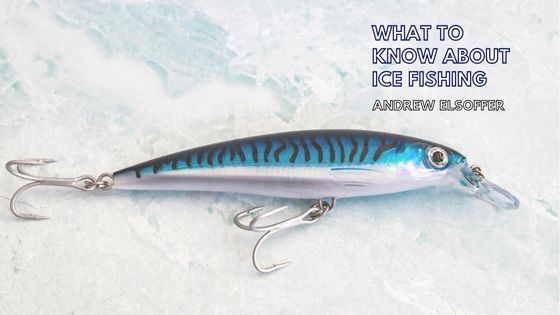Ice fishing, a winter tradition rooted in patience and resilience, offers a unique blend of challenge and tranquility. Unlike traditional fishing, ice fishing requires braving the cold and mastering techniques specific to the icy environment. This activity is not just about catching fish; it’s an immersive experience that combines skill, preparation, and an appreciation for nature’s quieter moments. Understanding the essentials of ice fishing is crucial for those intrigued by this frosty pursuit.
The history of ice fishing dates back to indigenous communities, who fished through the ice for sustenance during harsh winters. Today, it has become famous recreational activity enthusiasts enjoy across cold climates. Ice fishing involves cutting a hole in the ice of frozen lakes or rivers to access fish below.
This form of fishing requires specific techniques and equipment, differentiating it significantly from its open-water counterpart. The key lies in understanding the behavior of fish in cold water and adapting to the serene yet challenging winter environment. Fish are generally less active in cold water, leading ice fishermen to employ strategies that entice these lethargic swimmers.
Safety is paramount in ice fishing, as conditions can be unpredictable and hazardous. Knowing how to assess ice safety, manage risks, and prepare for emergencies. As ice fishing gains popularity, it becomes a social activity, with communities forming around shared fishing spots, contributing to local winter cultures and traditions.
Safety Considerations
Safety is the foremost consideration in ice fishing. The primary rule is never to assume ice is safe based on appearance alone. A minimum of four inches of solid ice is recommended for an individual angler, with thicker ice required for groups or equipment. Regularly checking ice thickness across your path with an auger or ice chisel is essential.
Dressing in layers is crucial to manage the extreme cold. Waterproof and insulated clothing, including boots and gloves, are necessary to prevent hypothermia. Carrying safety equipment like ice picks, a life vest, and a rope can be lifesaving in case of an ice break.
Awareness of weather conditions and how changing temperatures affect ice integrity is vital. It’s also important to inform someone about your fishing location and expected return time. For added safety, many seasoned ice fishers also recommend fishing in pairs or groups.
Emergency preparedness includes knowledge of first aid and hypothermia treatment. Trying to remain calm, calling for help, and using ice picks to pull oneself out is the advised protocol when falling through the ice.
Equipment and Techniques
The equipment for ice fishing is specialized, focusing on efficiency and adaptation to the cold environment. The essential gear includes an ice auger or chisel to drill fishing holes, a skimmer to clear ice from the hole, and a suitable fishing rod and reel.
Regarding bait and lures, choices depend on the target fish species. Live bait like minnows is often effective, but artificial lures are also popular. Jigging, a technique involving moving the bait or lure vertically, is commonly used to attract fish.
Portable shelters, such as tents or ice shanties, offer protection from the elements and can be equipped with heaters for comfort. However, proper ventilation is crucial to avoid carbon monoxide buildup when using heaters.
Electronics, like fish finders and GPS, are increasingly popular for locating fish and ensuring safety. Understanding how to read these devices can significantly enhance the ice fishing experience.
The technique also involves understanding fish behavior in winter. Fish tend to be less active and stay closer to the bottom. Thus, patience and the ability to adapt techniques, like slowing down the bait movement, are essential.
Environmental and Ethical Considerations
Responsible ice fishing involves environmental and ethical considerations. Practicing catch and release or adhering to local fishing regulations helps maintain fish populations. Be informed about the species and size limits in the fishing area.
Respect for the environment is crucial. This includes disposing of trash properly, not leaving any equipment behind, and minimizing the impact on the ice and surrounding nature. Using environmentally friendly gear, like biodegradable lures and lead-free jigs, also contributes to conservation efforts.
Ethically, ice fishing should be an activity that respects both the fish and fellow anglers. This includes avoiding overfishing, respecting other anglers’ space, and sharing the ice responsibly. Many ice-fishing communities foster a culture of respect and camaraderie, which is integral to the sport’s sustainability.

